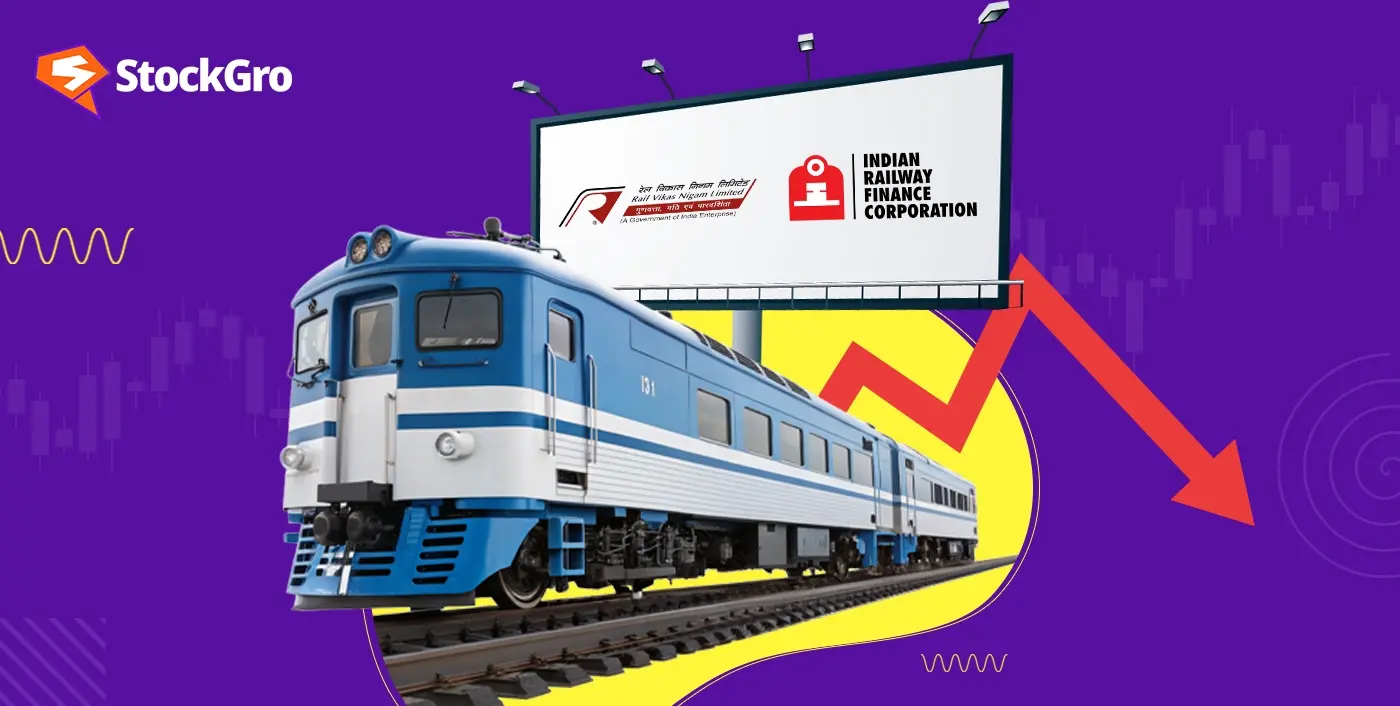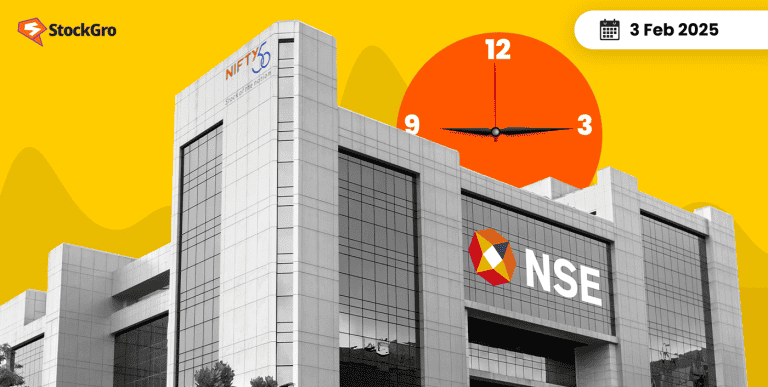
The Union Budget FY26 was expected to provide a big boost to railway infrastructure. However, the capital expenditure (capex) for Indian Railways was left unchanged at Rs 2.5 lakh crore, leading to a sell-off in railway stocks.
The market reaction: Railway stocks take a hit
On Monday, shares of key railway companies including IRCTC, RVNL, IRFC, Jupiter Wagons, and Titagarh Rail plunged by up to 8% as investors reassessed growth prospects in the sector. The market had anticipated a double-digit increase in railway capex, which did not materialise.
Also read: Bharat Electronics Stock Rises 4% – What’s Fueling the Rally?
Here’s how some key railway stocks performed after the Budget announcement:
| Stock | % Drop | Intraday Low |
| Jupiter Wagons | 8.58% | Rs 345.10 |
| Ircon International | 5.6% | Rs 189.75 |
| Rail Vikas Nigam Ltd (RVNL) | 6.5% | Rs 206.50 |
| Texmaco Rail | 4.3% | Rs 165.70 |
| Indian Railway Finance Corp (IRFC) | 5.5% | Rs 133.45 |
| Titagarh Rail Systems | 7.72% | Rs 882.20 |
Why are railway stocks falling?
Several factors contributed to the stock decline:
- No increase in railway capex: The budget allocated Rs 2.5 lakh crore for FY26, the same as the previous year, disappointing investors who expected a higher investment in railway infrastructure.
- Lack of new reforms: No major policy announcements were made to boost railway modernisation or new projects.
- Focus on fiscal prudence: The government prioritised balancing infrastructure spending with fiscal discipline, leading to moderate growth in overall capex.
- Profit booking: Many railway stocks had rallied before the budget in anticipation of increased spending. The status quo led to investors offloading positions.
Budget impact: Winners and losers
Who lost the most?
- Railway infra and rolling stock players like RVNL, IRFC, Jupiter Wagons, and Texmaco saw heavy losses due to the unchanged capex.
- Investors who expected a major push towards railway expansion were left disappointed.
Who could benefit?
- FMCG, auto, and consumer durables sectors may attract more investor interest, as the Budget focused on boosting consumption with tax benefits for the middle class.
- Despite the overall cautious outlook, rolling stock manufacturers such as Titagarh Rail and Texmaco Rail might still gain in the long run due to a 45,530 crore allocation for rolling stock in the Budget.
Analysts’ take: Short-term pain, long-term potential?
Mixed outlook for railway stocks
While the railway budget allocation did not meet expectations, some analysts remain positive about the sector’s long-term outlook:
- Prabhudas Lilladher highlighted that despite stagnant overall railway capex, physical addition targets for coaches and wagons were increased by 19.1% and 26.7%, respectively, which could support growth in the rolling stock segment.
- Vivek Lohia, MD of Jupiter Wagons, noted that the focus on rolling stock modernisation, including Vande Bharat trains and WAG-12 locomotives, will help reduce logistics costs and increase freight share from 27% to 45% by 2030 under the National Rail Plan.
A look at the bigger picture: Government’s infrastructure push
While railway stocks took a hit, the overall government capex rose marginally from Rs 11.11 lakh crore in FY25 to Rs 11.2 lakh crore in FY26. This indicates that the government is moderating infrastructure spending rather than aggressively expanding it.
Moreover, metro rail capex increased by 35% compared to FY25, suggesting that the urban transport segment could see more investments.
You may also read: Waaree Energies Stock Jumps 14% on Strong Q3 Performance
Should you invest in railway stocks now?
Given the current scenario, here’s what investors need to consider:
- Short-term volatility: Railway stocks could remain under pressure as the unchanged capex dampens sentiment.
- Long-term prospects: Companies involved in rolling stock manufacturing and electrification may benefit over time as the government continues modernisation efforts.
- Sectoral shifts: With an increased focus on FMCG, auto, and consumption-led sectors, investors may need to diversify their portfolios accordingly.
- Valuation check: If railway stocks correct further, they could present attractive buying opportunities for long-term investors.
Conclusion: Budget disappointment, but future potential
The railway sector was one of the biggest losers post-Budget, primarily due to the unchanged capex allocation. However, the long-term fundamentals remain intact, especially for rolling stock and freight corridor players. Investors should track future policy changes and company performance before making investment decisions.

